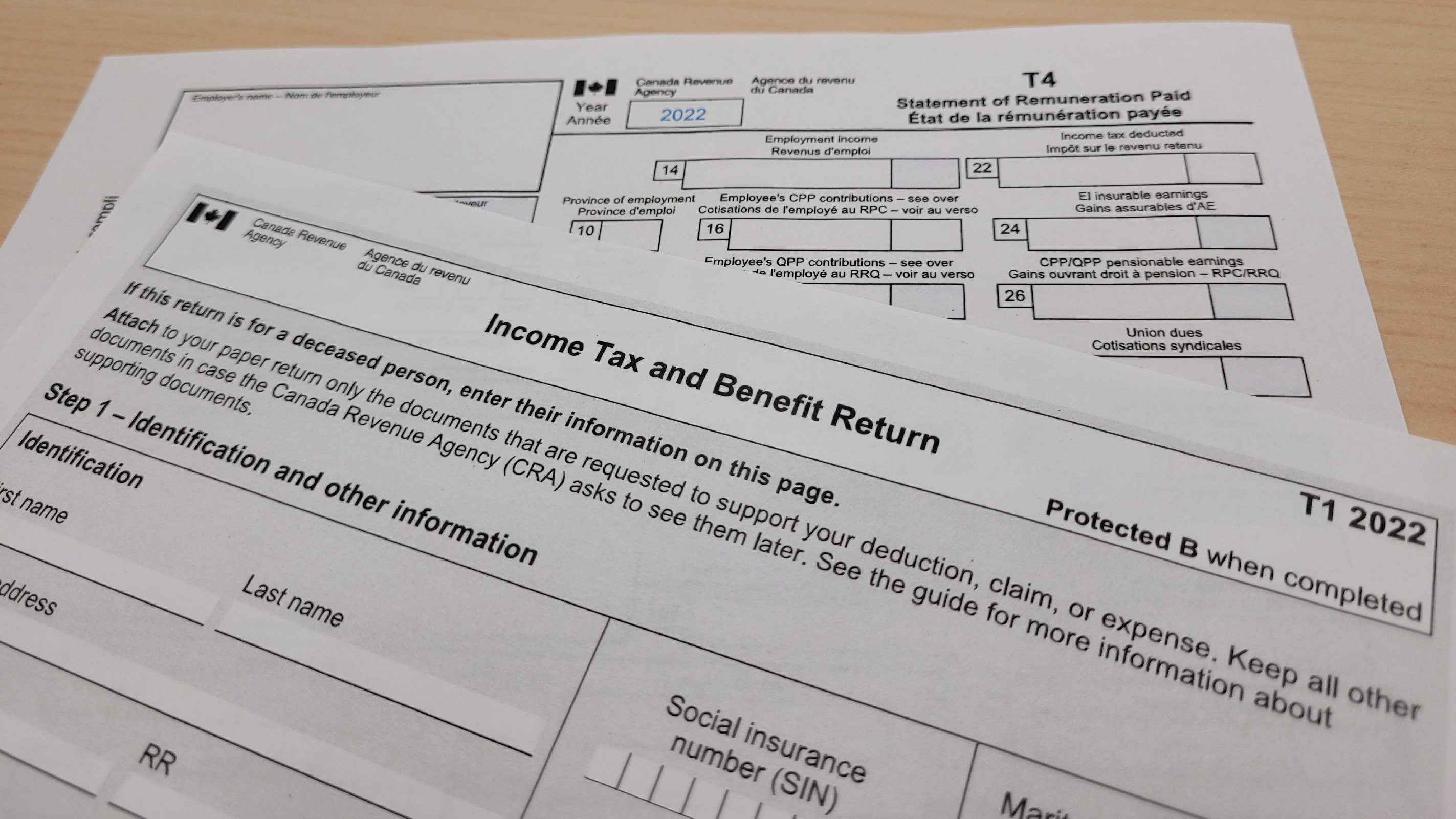
For those working in the accounting or tax preparation world, the next 10 weeks will be the busiest time of the year. From now until May 1, 1.3 million businesses and over 29 million Canadians will be preparing to declare their income and benefits received in 2022.
The tax season can be a time of plenty… or pain
Millions of Canadians across all income brackets emerge from the tax season with a refund.
For those with the lowest income, tax refunds may represent the largest infusion of cash they will receive in the year. In 2020, 14.2 million Canadians had an income of less than $40,000.
The tax season can also be beneficial to lower-income Canadians because the Canada Revenue Agency assesses whether you are entitled to several forms of benefits, based on your tax returns. For example, in January 2023, 13.2 million lower-income Canadians received $1.9 billion in quarterly GST/HST credits, and 3.4 million families received $2.3 billion in Canada child benefits based on what they reported in their 2021 tax returns.
Approximately 5.3 million Canadians emerged from the 2021 tax season unscathed—that is, with no refund and no balance owing.
Overall, the Canadian government paid out $37.3 billion in refunds to 17.8 million Canadians from February 10, 2022 to January 28, 2023, for an average return of $2,093.
While some among Canada’s top 1% may get money back this year, they also have the highest tax burden, paying $196,000, on average, in federal, provincial and territorial taxes in 2020.
Those in the top 1% reported $512,000, on average, in income in 2020, down $5,500 from a year earlier. Wages and salary accounted for $315,700, on average, and dividends for $77,300.
Despite a $10,500 drop in 2020 from a year earlier, the top 1% made three times more, on average, from their dividends alone than the bottom 50% reported in total income ($22,100, on average).
For those 8.1 million Canadians who owed the government money ($7,426, on average, in 2022) after all the number crunching was done last tax season, there was $60.3 billion of pain.
Keeping tabs on all that money is big business
Canadian individuals and businesses often turn to tax specialists to help them navigate the tax code and obtain the most favourable tax return possible.
The accounting, tax preparation, bookkeeping and payroll services industry brought in $23.6 billion in revenue in 2021, up 8.9% from a year earlier, as businesses looked for help to navigate the pandemic. Over half of this money (56.1%) went to the employees who worked in the industry in 2021.
Approximately two-thirds of the accounting firms in Canada crunched numbers for businesses and one in six filed on behalf of individual Canadians or households. The remainder worked for non-governmental organizations, government agencies or foreign customers.
The 132,287 Canadians working in accounting, tax preparation, bookkeeping and payroll services made, on average, $1,487.54 per week, from September to November 2022, up 20.5% from the $1,234.00 per week made by 124,689 employees over the same period one year earlier.
Millions of Canadians lower their tax rate through Registered Retirement Savings Plans and Tax-Free Savings Accounts
The tax code allows Canadians to lower their taxable income by buying Registered Retirement Savings Plans (RRSPs) or opening a Tax-Free Savings Account (TFSA).
Over 6.2 million Canadians put aside $50.1 billion for their retirement by making contributions to their RRSPs in 2020.
A TFSA is a way to set money aside to grow, tax-free. Contributions to a TFSA are not deductible for income tax purposes. Any amount contributed, as well as any income earned in the account (for example, investment income and capital gains), is generally tax-free, even when it is withdrawn.
In 2019, the most recent year for which data are available, 15.3 million Canadians had a TFSA. According to census data, 9.7 million Canadians added or withdrew from their TFSA in 2020.
Charitable giving gives you a tax break
Another way Canadians can lower their taxable income is by making a charitable donation.
Approximately 5.1 million Canadian tax filers reported making a charitable donation in 2020, down from 5.7 million a decade earlier.
While fewer people are donating to charity, the median donation has risen by $80 from a decade earlier to $340 in 2020—a result of big donors giving more.
If you are thinking of making a charitable donation to reduce your tax burden this year, it is too late. The deadline for making a charitable donation for the 2022 tax year was December 31, but you still have time to buy an RRSP (until March 1) and you can open a TFSA at any time.
Contact information
For more information, contact the Statistical Information Service (toll-free 1-800-263-1136; 514-283-8300; infostats@statcan.gc.ca) or Media Relations (statcan.mediahotline-ligneinfomedias.statcan@statcan.gc.ca).
